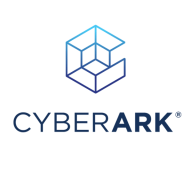

Find out in this report how the two Privileged Access Management (PAM) solutions compare in terms of features, pricing, service and support, easy of deployment, and ROI.
Deploying CyberArk Endpoint Privilege Manager has secured the infrastructure, which saves money, time, and resources.
I consider CyberArk Endpoint Privilege Manager's return on investment to be good since it effectively accomplishes the goals expected from privilege access management solutions.
They respond immediately to our inquiries, resolve issues promptly, and provide valuable guidance, especially in critical situations.
We engage them when needed and receive prompt responses that typically resolve our issues.
Earlier, we received support for normal tickets within a day, but now it takes one or two days to resolve issues.
I felt it was important to raise awareness about this new technique where attackers use legitimate applications to gain remote access and control of computers.
They are thorough and ensure the problem is addressed without pushing responsibilities onto me unnecessarily.
For technical support, I would rate Huntress a ten out of ten, and in truth, they are better than that.
We can set permissions per team or department, allowing some teams to elevate specific applications while others have different permissions.
CyberArk Endpoint Privilege Manager is quite scalable.
The available reports and other security tools assist in scaling it according to my organization's needs.
I know other techs with thousands deployed, so scalability isn't an issue.
Scaling Huntress is simple; I can manage up to a thousand devices without issue.
I can easily scale from one machine to thousands without any fuss.
It is a robust solution that has effectively supported our environment without major issues.
Since implementing it, we have not experienced any outages or stability issues.
CyberArk Endpoint Privilege Manager offers multiple options for creating and stopping policies.
We have not experienced any issues with lagging, crashing, or downtime.
I never experienced issues, but once there was an instance with false positives with their Rio service, which was quickly resolved by customer service.
It barely takes up resources on the computer, and I have had no issues with lagging or crashing.
CyberArk Endpoint Privilege Manager could be improved by simplifying the administration process, specifically when setting up policies and applications.
Currently, no user-based policy option is available inside the EPM console.
Some features provided in the self-hosted version of EPM are not supported in the software as a service version, like connection to some analysis applied by Palo Alto.
A more transparent way for the support team at Huntress and our IT team to collaborate to make it faster and easier would be beneficial.
Since we support customers in different countries, expanding the language options for their training would be beneficial.
Their EDR is pretty mature in terms of what it does.
CyberArk Endpoint Privilege Manager is slightly expensive, but costs can be negotiated to become more competitive.
CyberArk Endpoint Privilege Manager is costly compared to other solutions.
I've received feedback that the pricing is high, however, for me, the value it brings is worth the cost.
The savings from utilizing the included Windows Defender offset the cost of Huntress Managed EDR, making it an affordable solution overall.
It is not too expensive or too cheap. It is just right.
It can get expensive for small to medium businesses if large license quantities are not purchased.
CyberArk Endpoint Privilege Manager effectively reduces malicious content in applications by allowing us to identify and block dangerous applications.
It allows them to granularly manage controls to prevent some malicious activities on the endpoint machine.
CyberArk Endpoint Privilege Manager enhances computer security by providing minimal access, effectively preventing ransomware attacks.
What stands out most is their human element: when faced with an unknown threat, real people, not just automated processes, are investigating it, and they're people we trust.
They provide detailed remediation steps, explaining why an issue is a problem and what steps to take.
Previously, I could not modify it unless I had special Microsoft licensing, so it was beneficial to control Windows Defender through a central console to add policies and things like that.


CyberArk Endpoint Privilege Manager, a critical and foundational endpoint control addresses the underlying weaknesses of endpoint defenses against a privileged attacker and helps enterprises defend against these attacks through removing local admin rights, enforcing least privilege, and implementing foundational endpoint security controls across all Windows, macOS and Linux endpoints from hybrid to cloud environments.
Click here for a free 30 day trial: CyberArk Endpoint Privilege Manager free trial
Huntress Managed EDR offers robust managed detection and response capabilities with 24/7 threat hunting, intuitive deployment, and proactive threat management for small to medium businesses.
Huntress Managed EDR provides essential cybersecurity services to businesses by integrating seamlessly with existing tools like Microsoft Defender. Around-the-clock SOC expertise, proactive alerts, and automatic remediation define its core offerings. It effectively monitors threats, detecting footholds and malicious IPs while providing quick isolation of suspicious activities. The platform simplifies security management, reducing reliance on multiple security solutions and enhancing threat response efficiency.
What are the key features of Huntress Managed EDR?Huntress Managed EDR is commonly implemented in industries requiring enhanced cybersecurity, including finance, healthcare, and IT services. Its ability to complement traditional antivirus tools and integration with remote monitoring supports a comprehensive defense strategy against advanced threats. Its deployment is simplified for diverse IT environments, ensuring automated and fast response to emerging security challenges.
We monitor all Privileged Access Management (PAM) reviews to prevent fraudulent reviews and keep review quality high. We do not post reviews by company employees or direct competitors. We validate each review for authenticity via cross-reference with LinkedIn, and personal follow-up with the reviewer when necessary.